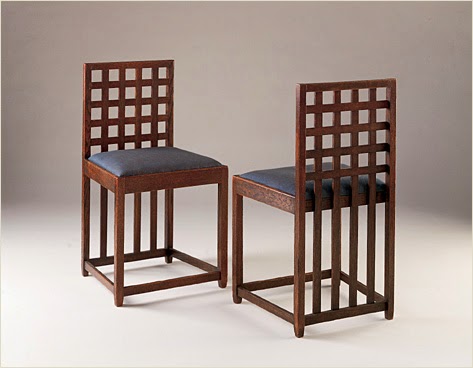.jpg)
Designers
and architects argued that modern architecture was fundamentally meaningless
because it lacked complexity and irony which prevailed in historical buildings.
Originally the term Post-Modern was applied to architecture which was then
borrowed by design which applied to furniture and other objects which resembled
architectural forms. Such example could be seen in Michael Graves, dressing
table, Plaza, 1981 for Memphis which
is clearly imitating the architectural form of a skyscraper. As stated in
Robert Venture’s book of 1966 “ambiguity and contradiction was valid in design”
instead of rationality and logic. He also argued that the lack of ornamentation
was dehumanising the design. Thus designers started to abandon what was accomplished
during the Bauhaus and the International Style to start over decorating their
designs.

During
this period we get to see the importance of semiotics, which is the study of
signs and symbols as elements of communicative behaviour. They will introduce
the analysis of systems of communications as language, gestures or clothing. In
fact this was seen in the theories of the Roland Brothers who believed that;
“if objects and buildings were full of symbolism … viewers and consumers will
relate more to them”. This theory was put into practice by Giorgo Armani in
1989 when he launched the Casual Look collection. It broke down the dividing
line between: day wear and evening wear … formal and casual, fusing them in a
single style.
At
this stage we also have the merging of fine arts and the mass culture. Architects
such as Michael Graves introduced a new aesthetic by the mid 1970’s. This can
be seen in the Graves Portland Building 1982. This building resembles Art Deco
which is also looking at other past styles. We have forms impersonating the use
of columns like the Greek and Egyptians used to make use of. A key stone figure
which is not in context and is not actually serving a purpose apart from
decoration.
The
Memphis Group was founded in Milan in 1981 and whose aim was to re-invigorate
the Radical Design and to devise a new creative approach to design. It was an
off shoot of Alchimia by Alessandro Mendini which Sottsass, Branzi and de
Luchhi had found Mendini’s approach too depressing. The name was chosen after
Bob Dylan’s “Stuck inside of mobile with
the Memphis Blues Again”. The main members were Ettore Sottsass, Michele de
Lucchi, Marco Zanini, Mateo Thun, Nathalie du Pasquir, George Sowden.
The
designs were starting to be very colourful and were starting to have designs
which were elevated to the level of an artwork. Designs were not just there for
function but good to look at as well. The designers were starting to deviate
from the “less is more” credo of simple yet functional design to a new belief
of “less is a bore” thus the bombastic new creations being made.
606 Universal Shelving System by Dieter Rams for Vitsoe
VS.
Memphis Italy Milo
Baughman Prisma Shelving Unit.
Ettore
Sottsass was an Austrian designer who had begun designing with Olivetti. He became
a prominent member of the Radical design movement during the 60’s and 70’s. His
bold and decorative designs which he produced in Memphis paved the way for the
post-modern design. He was an advocate of post modernism.
Some
examples of postmodernism are:
Clesitera
e maia, 1986 by Ettore Sottsass
Casablanca, 1981 also by
Ettore Sottsass
Arm
chair 1982 by Peter Shire
Both
Ettore Sottsass and Peter Shire are making use of random things and shapes that
clash among them. Their designs also incorporate parts of other previous styles
which not necessarily fit together. These designs are not necessarily
functional but serve more as an artwork to be seen rather than used. By this
they are going against all that has been accomplished so far but as long as
they are popular and can be mass produced the designers were happy about it.
Michael Graves. 1981. Museum of Fine Arts Boston: Michael
Graves Plaza. [online] Available at: http://www.mfa.org/collections/object/plaza-61893
[Accessed on 11th December 2013]
Lynn and Horst. 2010. An aesthetic commentary.Quality since
2007. Giorgio Armani - Spring/Summer 1989. [online] Available at: http://lynnandhorst.blogspot.com/2010/04/spectacle.html
[Accessed on 11th December
2013]
Wikipedia. Portland Building. 1982. Michael Graves. [online]
Available at: http://en.wikipedia.org/wiki/Portland_Building
[Accessed on 11th December 2013]
Area Neo. Charles Jencks SUN chair, made by Sawaya and
Moroni Italy 1980s. [online] Available at: http://areaneo.com/blog/author/admin/page/4/
[Accessed on 11th December
2013]
DesignBoom. Aug 2009. ettore sottsass: memphis retrospective exhibition. [online]
Available at: http://www.designboom.com/design/ettore-sottsass-memphis-retrospective-exhibition/
[Accessed on 11th December 2013]










No comments:
Post a Comment